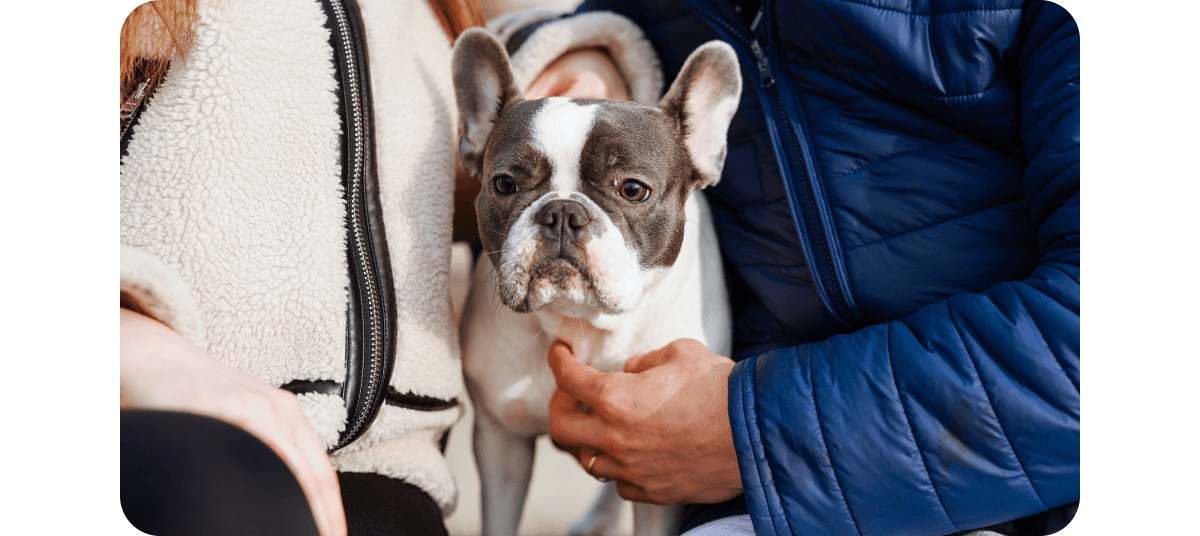Louisa the vet on: what to know about heatstroke in pets

Summary
To kick off our season of summer safety tips, veterinarian Dr Louisa Lane tells us all about heatstroke in pets.
You can avoid heatstroke by keeping your pets out of the heat, with constant access to shady spaces and drinking water. Never leave your pet in a hot, poorly-ventilated space like a conservatory or a hot car.
If you think your pet has heat stroke, move them into the shade and poor cool (not cold!) water on them, and call your vet.
This article was updated 13th April 2023
When our pets overheat, and are unable to cool down, they can develop a life-threatening condition called heat stroke.
Heatstroke in dogs is more common, and more well-known. This is because we're used to taking our dogs outside for walks or to play. Although it's less common, cats can develop heatstroke too, as can other pets like rabbits and guinea pigs.
What is heat stroke?
Heatstroke is an illness where your pet is too hot, and become sunable to regulate their body temperature.
Just like in humans, our pets have an optimal healthy body temperature. In dogs and cats, this is around 38°C. If their temperature reaches 40-41°C and over, it leads to a host of serious problems within the body, manifesting as seizures to organ failure.
The warmer your pet becomes, and the longer they remain warm, the more (permanent) damage is done. Unfortunately, heat stroke
is
a killer, which is why early intervention and prevention are essential to keep your pet safe.Insuring your pet gives you peace of mind so if they ever fall sick unexpectedly, such as heatstroke, you know their vet bills will be paid for.
What causes heat stroke in pets?
There are three main causes of heat stroke in pets. These are:
-
Exercising in the heat, especially more ‘at risk’ breeds.
-
Generally overheating in warm weather.
-
Staying outside for an extended period.
-
Being left in a poorly ventilated room.
-
Being kept in a hot car.
Overheating after exercise
Whilst we commonly see warmer weather in the summer months such as July, we know the UK likes to give us heatwaves at other times of the year too. But it doesn't have to be a scorching hot day to cause heatstroke in our pets, especially when we are exercising them, (like playing fetch).
As pet owners we must remain responsible, sensible, and prioritise their safety over our wanting to spend time with them on warm days. Especially for at-risk breeds (which we will talk about below.)
Don’t forget that often the ground temperature can be excessive for dogs and can burn their pads. If you cannot leave the back of your hand on the pavement for a few seconds, it isn’t fair to walk your dogs outside.
Being kept in a hot car
We should all know by now, to never leave dogs in hot cars. And although being kept in a hot car can cause heat stroke, it is important to note it's not the only cause of heat stroke in pets.
Recent studies suggest that the most common causes of heat stroke is due to exercising your dogs in the heat. A dog can overheat within 6 minutes of being exercised, and for some breeds this can literally just be a short stroll.
We don't see heatstroke in cats as often, most likely due to the fact we rarely travel with them or exercise them. However, they can still suffer from heat stroke if they overheat.
Being kept in a hot, stuffy room
Your dog or cat can get heat stroke if they simply overheat in warm weather. This may be because the pets are kept outside in the heat, or left in a poorly ventilated room in a house like a conservatory, caravan, or mobile kennel.
What does heat stroke look like in cats and dogs?
Initially we are looking for signs of heat stress rather than heat stroke. This is the initial overheating phase which we can reverse. When a pet is suffering from heat stress we might see:
-
Panting at rest.
-
Lethargy and not wanting to exercise.
Cats rarely pant like dogs, so if you are seeing your cat pant, do contact your vet immediately.
As our pets get progressively warmer and their internal body temperature rises, we may start to see:
-
Salivation
-
Vomiting
-
Diarrhoea
-
Incoordination (also known as ataxia.)
-
Seizures
-
Lack of consciousness
-
Dark red gums (or even very pale gums if they start to go into shock.)
What dogs and cats are more at risk of heat stroke?
Whilst any dog or cat can develop heat stroke, some pets are at higher risk of developing it than others.
Breeds with underlying health conditions are at greater risk. Conditions such as obesity, heart disease, laryngeal paralysis, and brachycephalic obstructive airway disease can make your pet more vulnerable to overheating.
Interestingly, some breeds are at greater risk than others. Springer Spaniels and Golden Retrievers have a slightly increased risk. Large breeds of dog also carry a higher risk.
While not a risk of heatstroke, cats with pale skin and white fur are a risk of sunburn (which can cause skin cancer). Put some pet safe sun cream to use on their nose and ears to protect them from UV rays.

How is heatstroke in pets treated? Is there anything I can do at home to help them?
The initial treatment for heatstroke in any pet is aimed at slowly cooling your pet down and rehydrating them.
Get them somewhere shaded and pour lukewarm/cool water on them. Not cold, but cool. (Using cold water constricts their blood vessels, making it harder for them to cool down). You can repeat pouring water onto them until you seek veterinary help.
If they will drink, offer them some water. This will help to cool them down and prevent further dehydration.
You do not need to place cold towel on them as this can trap heat and stop them from cooling down.
Call your vet immediately for their advice. In most cases its essential that you seek professional medical help as soon as you can, because your pets need to be monitored over a few days due to their risk of organ failure, which manifests days later.
If caught early, the heat stress can be reversed with cooling and rehydration. However, the longer your pet is left in the heat, and the longer they go without treatment, the worse the prognosis and outcome.
Why is keeping my pet in a car so dangerous on a hot day? Can I still travel in the car with my pet when it's warm?
It is unacceptable to leave any pet alone in a car on a warm day, even with the windows open in the shade (this doesn’t really make a difference.)
The inside of a car (especially a darker car) heats up exponentially, and is much hotter than the ambient temperature outside. For example, on a 24°C day, the inside of a car can reach almost 45°C in just 30 minutes.
We have all come back to a car where we have struggled to sit on the seat or touch the steering wheel because its become too hot. Imagine what it is like to try and breathe in that heat!
If you absolutely do need to travel with your pet in a car, you must supervise them at all times. Use air-con, make sure they have access to fresh water, and make multiple stops for fresh air. Please reconsider your journey if your car does not have cooling faciltiies, as you must account for long stops in traffic.
You said that exercise is the biggest cause of heat stroke in dogs. Should I still exercise my pet in warm weather?
Take into consideration your specific pet's health, and be sensible about what exercise you do on warmer days.
Dogs die if they’re kept in hot cars and exercised in the heat. But they wont die if they don't get a decent walk for a few days.
If you need to exercise your pet, keep it calm. Do it in the early morning and later in the evening when it's cooler, and stick to the shade where you can.
Whilst it can seem confusing, letting your dog swim on warmer days can also cause them to overheat.

Are there other ways to can prevent heatstroke in pets?
Heat stroke is extremely serious and is completely avoidable. Whether you have a cat or a dog, the advice to prevent heat stroke in pets remains the same.
-
Always make sure they have access to multiple bowls of water.
-
Make sure they have access to shaded areas.
-
It is best to keep them indoors in a well-ventilated cool place.
-
Use cooling mats for them to sit on.
-
Keep them out of direct sun.
-
Do not place pets in poorly ventilated rooms like caravans and conservatories, as they can heat up like a greenhouse.
How can I keep my pet safe in hot weather?
Please be sensible with your pets. All pets need to be kept away from heat, kept somewhere cool and shaded, with access to water. Always keep an eye on them and seek veterinary help immediately if you have concerns about your pet overheating. Here are some more tips on keeping your pets safe in hot weather.
It is far better and safer to keep them inside on a warm day than risk them developing heat stroke.
Jump to
Why isn’t my cat using the litter tray?

Why isn’t my cat using the litter tray?
By Rachel Rodgers MSc, Head of Training at Napo Pet Insurance
Blog
10 things you need to know about Frenchies

10 things you need to know about Frenchies
By Rachel Rodgers MSc, Head of Training at Napo Pet Insurance
Blog
Are Frenchies aggressive or stubborn?

Are Frenchies aggressive or stubborn?
By Rachel Rodgers MSc, Head of Training at Napo Pet Insurance
Blog